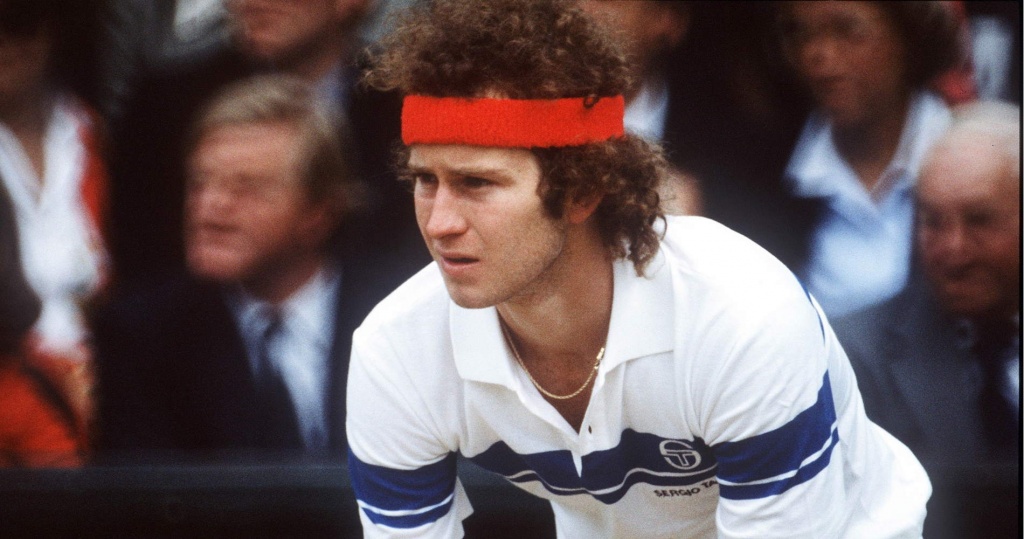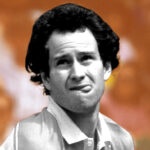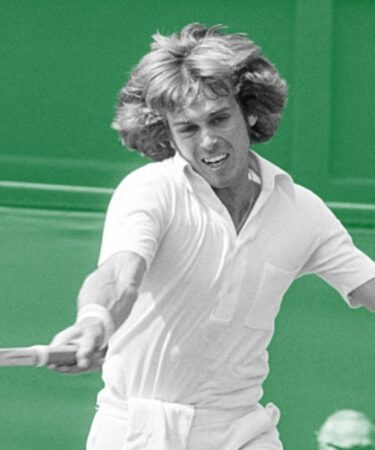December 10, 1978: The day 19-year-old John McEnroe single-handedly crushed Great Britain in the Davis Cup final
On this day, December 10, 1978, John McEnroe clinched the Davis Cup title for the United States. A teenager then, McEnroe dominated Great Britain’s team from start to finish
 McEnroe OTD 12_10
Image Credit – Panoramic/ Tennis Majors
McEnroe OTD 12_10
Image Credit – Panoramic/ Tennis Majors
What exactly happened on that day?
On this day, December 10, 1978, 19-year-old John McEnroe destroyed Buster Mottram, of Great Britain, 6-2, 6-2, 6-1 to give the United States its first Davis Cup title since 1972. The young left-hander, who had already routed John Lloyd on the opening day (6-1, 6-2, 6-2), did not even face a single break point in the final match. No one had ever gone through an entire Davis Cup final so easily, with McEnroe losing just 10 games in all. The level of tennis that he displayed over the weekend confirmed his ability to play his best tennis on the biggest stages, which would lead him to his first Grand Slam title the following year at the US Open.
The people involved: John McEnroe and Buster Mottram
- John McEnroe: The rising American star
John McEnroe, the left-hander from New York, stunned the tennis world since his first steps on the tour in 1977, when he showed up at Wimbledon as a 17-year-old amateur and made his way out of qualifying and went all the way to the semi-finals. “Mac” was very talented, his game being based on precision and touch on top of an iconic and lethal serve. In 1978, after claiming the NCAA title, he reached the semi-finals at the US Open, where he was defeated in straight sets by world No 1 Jimmy Connors (6-2, 6-2, 7-5).
A few weeks later in Stockholm, McEnroe faced Swedish legend Bjorn Borg for the first time, and he won the first episode of an upcoming rivalry 6-3, 6-4. These results propelled him to world No 5. McEnroe was also known for his shocking on-court behaviour in the well-mannered world of tennis. His constant quarreling with the officials made him infamous in a gentleman’s sport.
- Buster Mottram: Son of former Davis Cup player
Buster Mottram was born in England in 1955. After winning the junior event at Roland-Garros in 1972, he claimed the most important of his two career titles in Johannesburg in 1974, defeating Tom Okker in the final (6-4, 6-2). His best Grand Slam performance was a fourth round appearance, reached at the French Open in 1977 (defeated by defending champion Adriano Panatta 2-6, 4-6, 6-3, 6-4, 6-4). In 1978, his best result was a final in Munich, where he lost to Guillermo Vilas in straight sets (6-1, 6-3, 6-3), and in December, he was ranked 30th in the world.
The place: Mission Hills Country Club, California
The 1978 Davis Cup final was held at the Mission Hills Country Club, a sports complex located close to Palm Springs, California, an area famous for its golf courses. Playing such an important event in such a remote location was controversial, as an English visitor told Sports Illustrated:
“In a bloody desert. A bloody resort conversation piece. Would we put it on in a beach pavilion at Cornwall? Would we take it to Bermuda and make it into a reception in the Governor’s garden? 200 people watching the Davis Cup final—and half of them flown from England. Your players deserve the Cup. Well and good. America doesn’t. Sorry.”

The facts: McEnroe way too strong for Mottram
At the end of 1978, McEnroe was no longer just a talented kid taking his first steps on the tour. The American prodigy, after reaching the semi-finals at the US Open, had claimed his first four titles, defeating the tennis legend Bjorn Borg on his way to the Stockholm crown. He was ranked No 5 in the world and was the main attraction of the Davis Cup final against Great Britain.
On Day 1, he faced the 1977 Australian Open runner-up John Lloyd and swept him off the court 6-1, 6-2, 6-2.
“It’s incredible,” said Lloyd, according to Sports Illustrated. “I have never played anybody, including Borg and Connors, who has been as tough and made me play so many shots. No one has ever made me look like that much of an idiot.”
In the second match, which the sportswriters called “the Mad Match,” Brian Gottfried blew a two-sets-to-love lead against Mottram, who leveled the tie at 1-1 as he came back to win 4-6, 2-6, 10-8, 6-4, 6-3.
Bob Lutz and Stan Smith easily clinched the doubles point for the Americans on Saturday. On Sunday, December 10, McEnroe faced Mottram in front of 4,000 spectators, with the opportunity to seal a 3-1 win for the United States.
The match turned into a masterclass. The three sets lasted only one hour and 34 minutes, during which McEnroe did not face a single break point; in fact, he was never even pushed to deuce, losing only 12 points in 15 service games. From 2-2 in the second set until 3-0 in the third, he won seven consecutive games, dropping only five points in the process.

“I was surprised he stayed back so much,” McEnroe said later, according to the New York Times. “I think it was not very smart of him to do that. He gave me the net… It’s probably the best I’ve ever played in an important match.”
The teenager had just proven his ability to perform on great occasions. The next step for him was to overcome his American rival Jimmy Connors, who had defeated him four times in four encounters.
“I don’t know if I will ever beat him. But I will follow him to the ends of the Earth.”
What next? McEnroe enjoys glittering career
His Davis Cup performance would put McEnroe on the prestigious cover of Sports Illustrated for the first time. In 1979, he would claim no fewer than 11 titles, including his first Grand Slam, defeating Vitas Gerulaitis in the US Open final (7-5, 6-3, 6-3). In March 1980, he would reach world No 1 for the first time. McEnroe would claim seven Grand Slam singles titles in total and spend 170 weeks on top of the ATP singles rankings. He also won nine men’s doubles Grand Slam titles and was the top-ranked player in doubles for 269 weeks, behind only Mike Bryan (506 weeks) and Bob Bryan (439 weeks).
Unlike Connors, despite his busy schedule, McEnroe would regularly participate in the Davis Cup, and he led the United States to the title five times (1978, 1979, 1981, 1982, 1992).
“When they say, ‘Game USA,’ it’s different,” McEnroe would explain. “And you got to wear a jacket that said ‘USA’ on the back, and you went to places all over the world. I found that exciting.”










